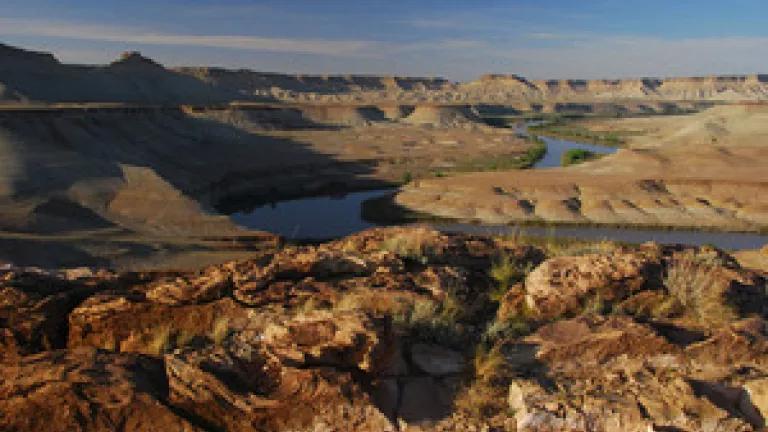
Congress started a mess in April when it stopped funding the Interior Department's “Wild Lands” program. But in a memo released today, Interior Secretary Salazar made the situation about how to manage these unprotected wilderness lands worse.
In what amounts to a classic situation of sausage-making DC style, Salazar has taken the bad ingredients that were handed to him by Congress, and attempted to transform them into something more palatable for all.
But the memo falls far short of resolving these outstanding issues, and only leaves a bad taste. Regrettably, whether these lands will be permanently conserved for their wilderness values has been left in a state of limbo due to Salazar’s announcement.
As discussed in previous postings, in December 2010 Salazar took the right step in affirming the administration’s regulatory obligation to protect millions of acres of lands with wilderness value that are found mainly in West. Secretarial Order 3310, was an important step in committing the nation to preserve wilderness. Salazar was compelled to issue such an order because the Bush administration had turned its back on their responsibilities to protect these lands. Essentially, Salazar’s order attempted to restore the wilderness policy that Bush overturned, a bipartisan policy that was honored by the five preceding presidential administrations – including the senior President Bush.
But Congress, emboldened by the same oil and gas interests that opposed the Wild Lands policy and have always held the greatest contempt for wilderness, passed a congressional rider in this year’s budget deal that attempted to restrict these protections. And while the rider defunded certain aspects of the Wild Lands policy, it did not change the fact that these lands were still required to be managed as wilderness as explicitly provided for under the law.
Regrettably, the memo released today does very little to reaffirm the powers available to the administration to ensure these vital lands are protected. In addition, the administration also committed to work with some of the most vocal Congressional opponents of wilderness in attempting to formulate a consensus driven report that will recommend future wilderness designations.
Consensus is a noble aspiration, but it is hard to imagine that those in Congress who have so vehemently opposed the concept of wilderness, are going to be evenhanded in partnering with the administration. Possibly worse, this report seemingly locks out the public. Instead, the Interior Department will only seek the opinion of “…members of Congress, state and local officials, tribes, and Federal land managers.” Members of the public are visibly absent from that list, which is quite a contrast to current laws that govern public lands – regulations that typically seek robust public participation in the process of governing federal lands.
So what’s at stake? Currently there are 245 million acres of public land managed by the Bureau of Land Management (BLM). A coherent wilderness policy would protect the last remaining unprotected wilderness lands, which represent a sliver of the total lands managed by the BLM, but still amount to millions of acres of wilderness. Without such a policy, these lands would remain vulnerable to extractive uses and off-road vehicle recreation. For example, in Colorado alone, 85% of the BLM lands in Colorado are open to oil and gas development. In contrast, only 205,000 acres (or 1.7%) of BLM lands are currently protected as wilderness. Lands with wilderness characteristics are available for many recreational uses and significantly contribute to western states’ economies.
Go to NRDC's BioGems website to take online action to communicate to the administration and the Department of Interior that they must stand strong on wilderness protections.

